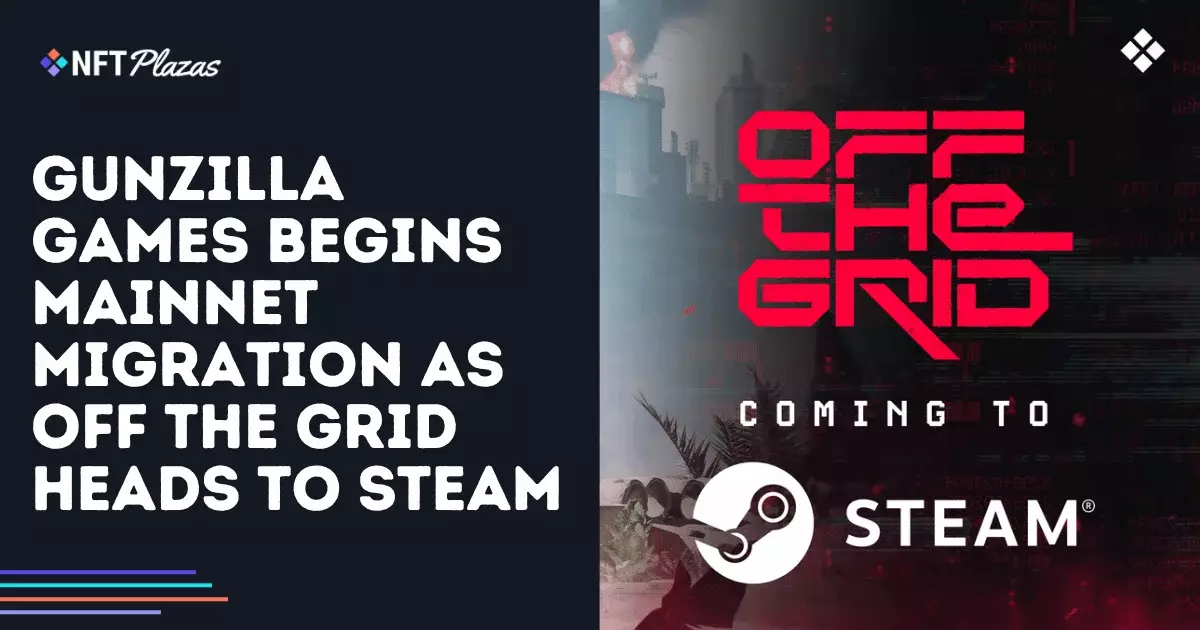Gunzilla Games’ recent announcement of migrating players to its GUNZ blockchain ecosystem epitomizes the ongoing allure of integrating blockchain technology into video games. On the surface, this move appears revolutionary—players will finally have true ownership of their in-game assets, from weapons to skins, thanks to on-chain tokenization. However, a closer inspection reveals that much of this narrative is built on a fragile foundation of hype, regulatory complexity, and technical teething problems. The promise of persistent ownership, often lauded as a cornerstone innovation, risks being undermined by the very constraints of blockchain infrastructure and platform policies.
The migration of 21,000 players out of 17.3 million wallets to the mainnet cannot be seen as a triumph but rather as an incremental step fraught with hurdles. While the ecosystem demonstrates activity—over 413,000 asset decodings and nearly $13 million in trade volume—these figures are often inflated by early adopters and speculators, not sustainable engagement. The core issue lies in whether mainstream players genuinely desire blockchain-based ownership or if they are merely attracted to the speculative potential of tokens. Gunzilla’s insistence on expanding this ecosystem seems driven more by internal ambitions and market trends than by user demand or practical gaming improvements.
The Fiction of Regulatory Progress and Market Scalability
A significant aspect of Gunzilla’s strategy hinges on regulatory licenses, notably the impending Virtual Asset Service Provider (VASP) license. While the studio projects confidence in achieving compliance, the reality is that global regulatory frameworks remain unpredictable and inconsistently enforced. The assumption that licensing and partnerships with decentralized exchanges will seamlessly lead to mass adoption is overly optimistic. Historical precedents show that blockchain integration within games often stumbles due to legal uncertainties, regulatory clampdowns, or community pushback—none of which are fully addressed in Gunzilla’s optimistic tone.
Part of the narrative hinges on expanding access through these licenses and new token pools, but the underlying question is whether this scaling can be achieved without alienating traditional players wary of crypto’s volatility, regulatory crackdowns, or potential confiscation of assets. Moreover, the business model is increasingly tethered to tokenomics, which may ultimately prioritize trading volume over genuine gameplay enhancement, leading to a distorted ecosystem driven by speculation, not gameplay innovation.
Inconsistent Platform Policies Undermine Blockchain Integration
Perhaps one of the most telling failures in Gunzilla’s strategy is their reliance on external platforms, notably Steam, for broader distribution. Despite the anticipated Steam release of Off The Grid in July 2025, the game will operate in a testnet environment due to Steam’s current policies against blockchain content. This workaround underscores a critical point: established platforms remain hesitant or outright hostile toward blockchain features in gaming. As long as such gatekeeping persists, full-on chain integration remains an illusion rather than reality.
This fragmented approach—blockchain features active on consoles but limited on PC—creates a confusing user experience. It undermines the very premise of a unified ecosystem where assets are fully portable and immutable across devices. The superficial nature of blockchain implementation on these platforms may sow skepticism among players who increasingly see these features as gimmicks rather than genuine innovations. If mainstream services like Steam, the industry’s gatekeeper, stay resistant, the promise of democratized ownership will be forever footnoted by regulatory and institutional roadblocks.
Gameplay Innovations or Just Another Front in Token Hype?
While Gunzilla touts new gameplay features—such as fresh arenas, a new weapon, and mechanics like gyro aiming—the core innovation remains entangled with its blockchain ambitions. The gameplay updates are, at best, incremental; they serve as window dressing that distracts from the underlying economic and regulatory concerns. The addition of new modes and weapons enhances engagement but does little to justify the complex, often opaque, on-chain asset management layer.
Furthermore, the ultimate appeal of blockchain in gaming—player sovereignty—may clash with reality. Ownership is valuable only if assets maintain their utility, value, and security. Yet the widespread instability of blockchain networks, coupled with the risk of wallet hacks and regulatory seizures, renders the promise of permanence somewhat hollow. The risk that players’ assets could become inaccessible, invalidated, or taxed in unforeseen ways raises fundamental questions about whether blockchain integration genuinely benefits the average gamer or simply creates new avenues for corporate profit and speculation.
Gunzilla’s approach embodies a hopeful yet arguably naive vision: that blockchain technology will redefine gaming by empowering players with true ownership. However, this vision is clouded by regulatory hurdles, platform resistance, and inherent technical limitations. The current focus on migration milestones, licensing, and tokenomics appears more aligned with capitalizing on the hype rather than delivering tangible, player-centric innovations.
Ultimately, the industry’s pivot toward blockchain gaming is akin to chasing a mirage—flashing promises of democratization, permanence, and economic independence. But unless fundamental issues—regulatory, technical, and practical—are addressed, this journey will remain stuck in a cycle of false starts and inflated expectations. For center-right wing skeptics like myself who value stability, property rights, and pragmatic innovation over speculative schemes, Gunzilla’s ambitious enterprise highlights the often disconnected fantasy of blockchain’s role in mainstream gaming. It’s a gamble that, for now, seems more about market positioning than genuine progress.

